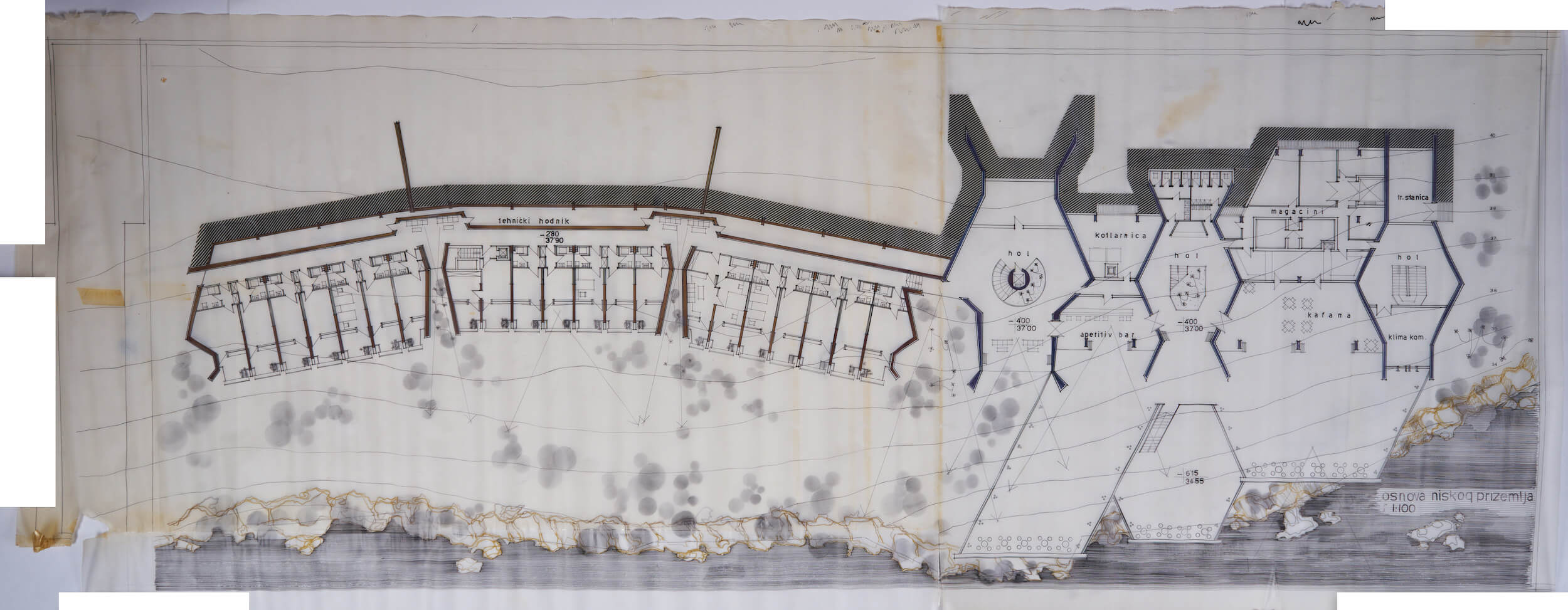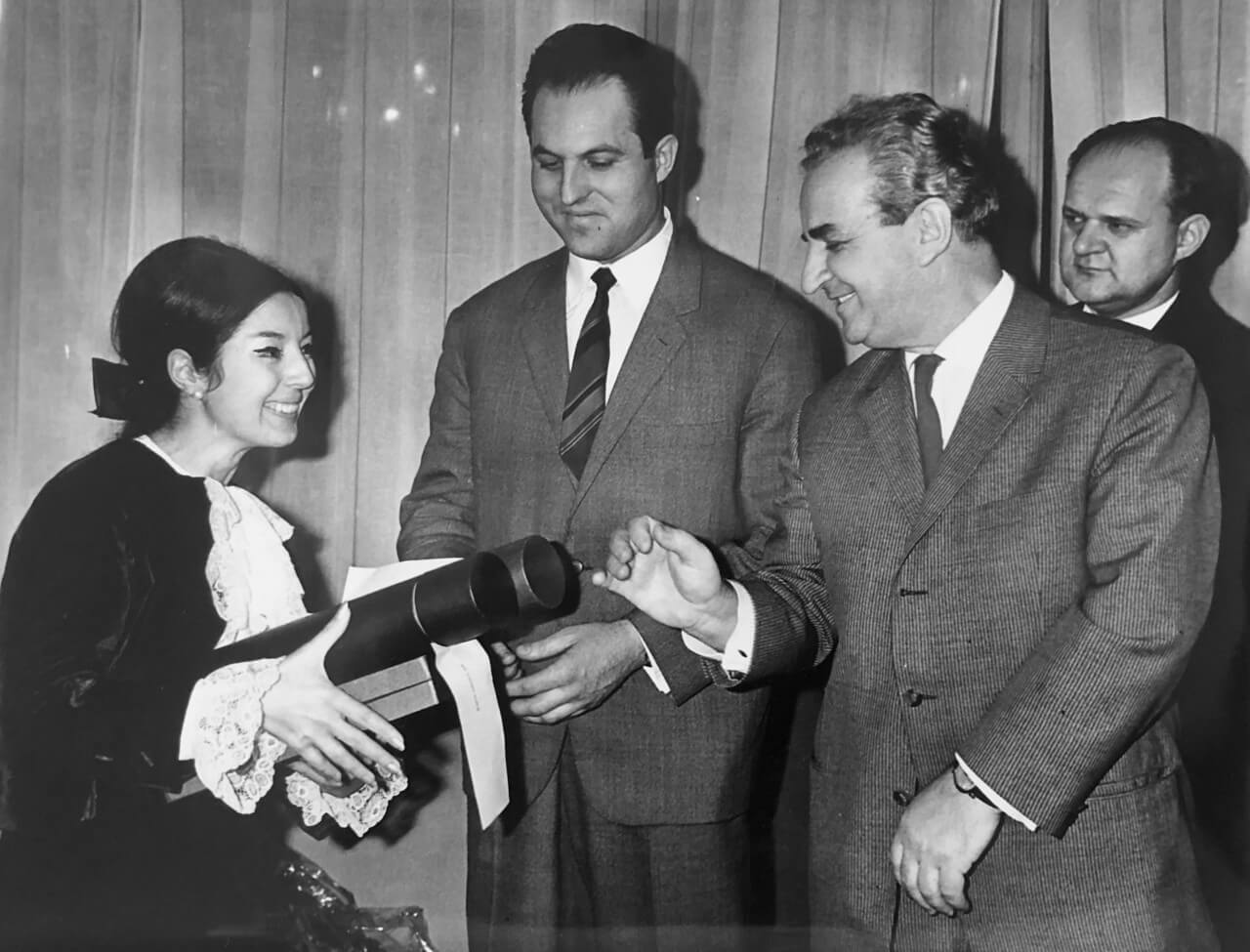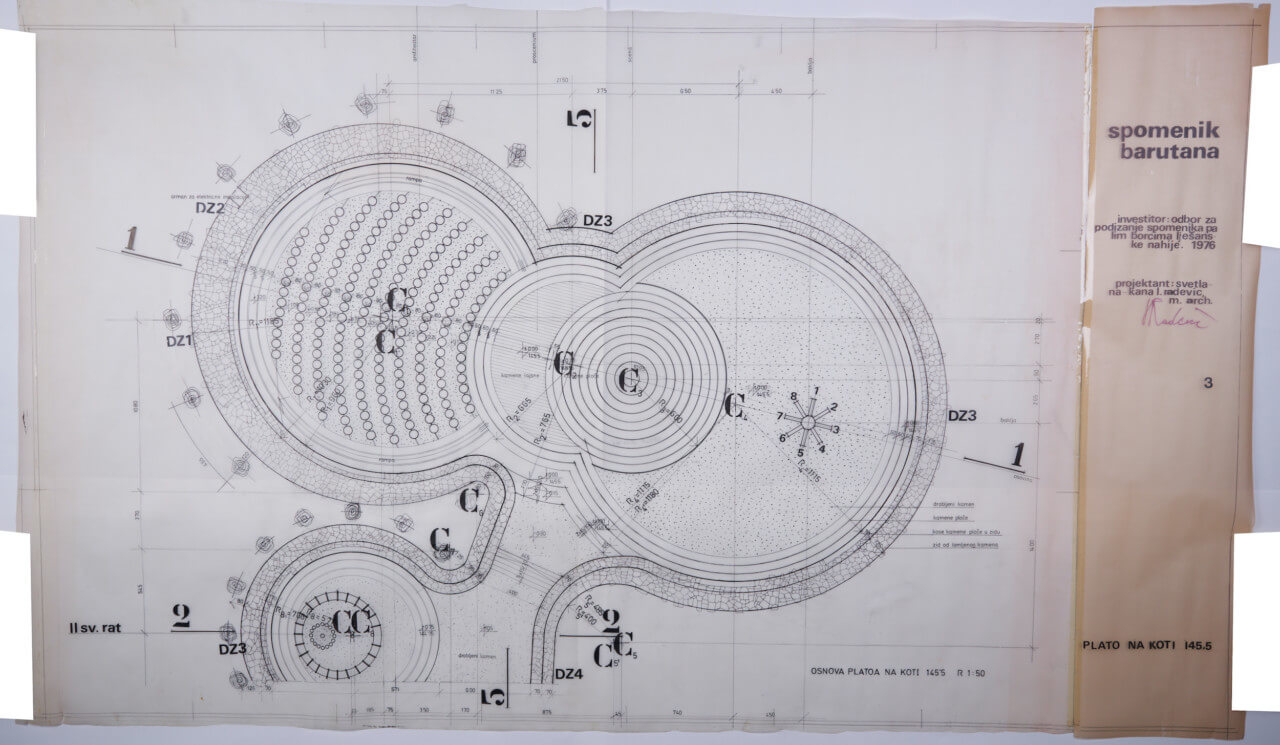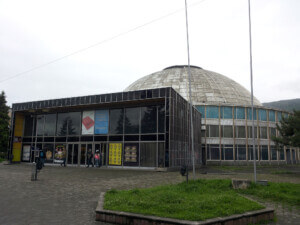Svetlana Kana Radević, a socialist Yugoslav architect who effortlessly moved between and drew influence from Philadelphia, Tokyo, and the Montenegrin capital city of Podgorica over the course of her celebrated career is the subject of a comprehensive exhibition opening May 22 at the Palazzo Palumbo Fossati as one of 17 collateral events at the 17th Venice Architecture Biennale.
Titled Skirting the Center: Svetlana Kana Radević on the Periphery of Postwar Architecture, the exhibition is organized by the APSS Institute, a research- and education-focused urbanism and design platform based in Montenegro. Its cocurators are Dijana Vučinić, founder of the APSS Institute and interdisciplinary architectural practice DVARP, and Anna Kats, a New York-based architectural historian, curator, and critic who served as curatorial assistant of the 2018 Toward a Concrete Utopia: Architecture in Yugoslavia: 1948-1980 exhibition at the Museum of Modern Art. As Srdjan Jovanovic Weiss noted in his review for AN, Radević and other socialist Yugoslav female architects were “largely present” in the exhibition.
Skirting the Center turns the spotlight exclusively on Radević, the first Montenegrin female architect, by displaying an extensive collection of drawings, photographs, and newly discovered correspondences “that make it possible to contextualize and historicize an exceptional, but overlooked figure of postwar architecture,” as stated in an exhibition press release.

The exhibition is the first major survey of Radević’s built work, which includes bus terminals, housing blocks, business centers, Brutalist hotel towers, and anti-fascist memorials. Also highlighted is the Hotel Podgorica, a spectacular convergence of indigenous materials and radical modernist forms that melds into its verdant site along the banks of the Moraca River. (And yes, you can still very much book a room there.) The competition-winning hotel design earned Radević the Federal Borba Award for Architecture in 1967. Radević, who relocated to Philadelphia to study with Louis Kahn at the University of Pennsylvania as a Fulbright fellow pursuing her Master of Architecture several years after the landmark hotel was completed, was just 29 when she was bestowed with the prestigious Borba Award. She remains the award’s youngest—and only female—recipient.
“Radević subverted hierarchies that privilege cosmopolitan centers over provincial peripheries by locating her personal practice in Montenegro. Yet her architecture was ultimately supranational, simultaneously digesting vernacular building traditions as well as her global study and work experience,” wrote the Skirting the Center’s curators. “By positing how to re-center a historical figure and geopolitical context that have long been at the peripheral fringes of architecture’s normative history, this exhibition recovers her distinctive role as a negotiator of the spatial contract—between state and citizenry, between center and periphery—as a case study in facilitating social consensus and cultural exchange for contemporary practitioners.”

Radević was born in 1937 in Cetinje, Yugoslavia, the former royal capital of what is now Montenegro. She died in 2000 at the age of 62. Prior to relocating to Philadelphia to study with Kahn while simultaneously maintaining her independent architectural practice in Podgorica, Radević attended and graduated from the Faculty of Architecture at the University of Belgrade. Throughout her globe-spanning yet ancestrally grounded career, Radević frequently collaborated with her sister Ljiljana Radević, who was also an architect.
As mentioned, Skirting the Center opens on May 22 in Venice. It runs throughout the entirety of the biennale, closing on November 21. The organizers of several national pavilions (Singapore, Switzerland, and the Netherlands among them) at the biennale, which has already been postponed twice due to the coronavirus pandemic, recently announced their intentions to hold guest-free “silent openings” during the invite-only preview period in reaction to a spike in COVID-19 cases in Italy.















